We bought tickets on 12GoAsia ($9 each) to take a Green Bus Express to Chaing Rai, a three hour journey. Our immediate first impression on arriving in Chiang Rai was very positive. The sidewalks are nicer, flatter, wider, and cleaner than in Chaing Mai. They are not too congested with vendors and scooters.
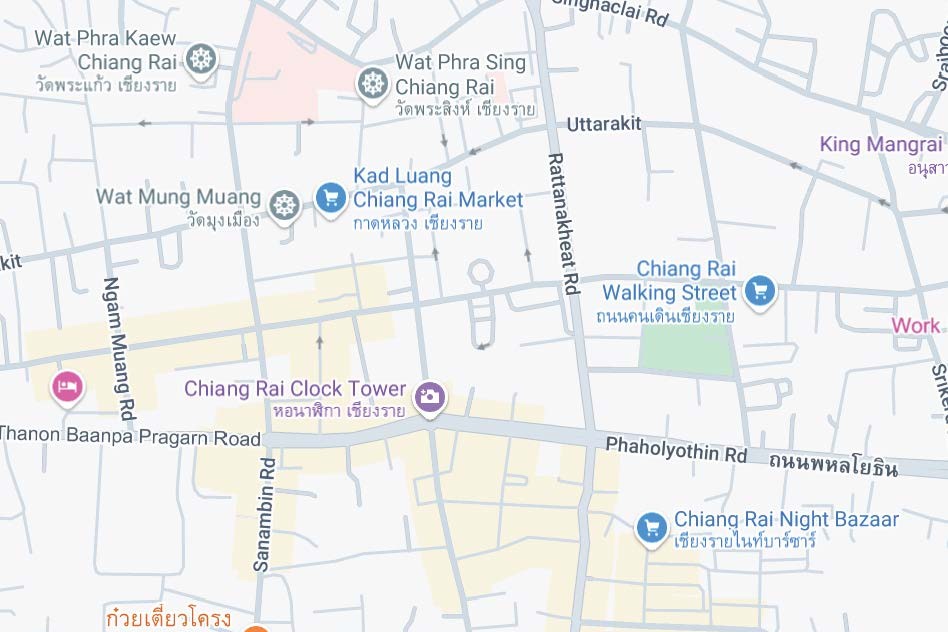
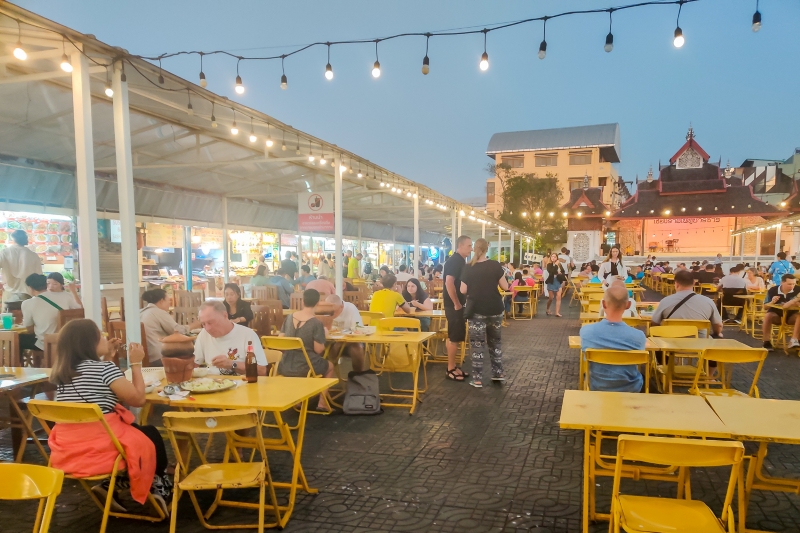
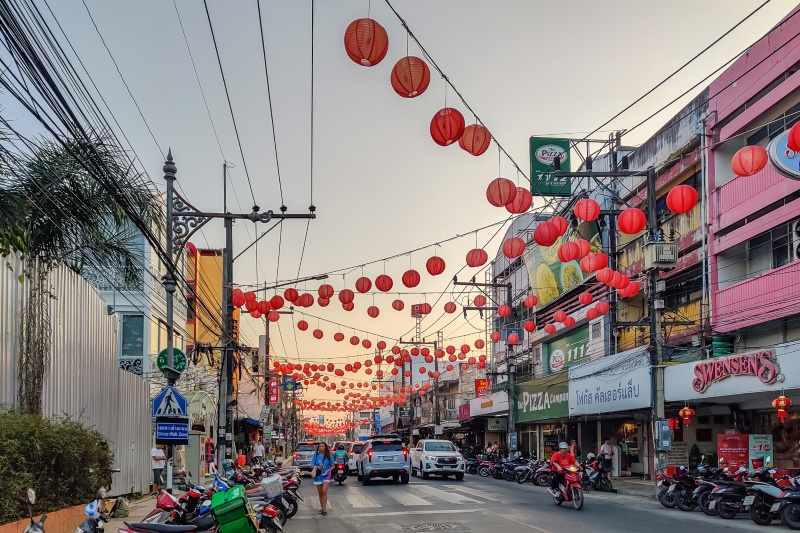
We easily walked ten minutes from the bus terminal to our hotel, simply named the Chaing Rai Hotel, with rolling suitcases. Seriously, good sidewalks make all the difference.
As with Chiang Mai, tourism in Chiang Rai is based around wats and outdoor activities, especially three modern wats that almost seem to have been purpose built for tourists: Wat Rong Kung (the White Temple); Wat Rong Suea Ten (the Blue Temple); and, Wat Huay Pla Kang (a/k/a Big Buddha). The fourth big ticket activity is Baan Dam Museum (a/k/a the Black House), a modern art place.
Catching an early morning ride to the temples proved to be a challenge as several Bolt drivers wanted to sell us a half day tour package for 1,500฿ (about $45) to go to the Blue Temple, Big Buddha, and the Black House, all of which are on the north side of town. We declined and ended up paying about 500฿ ($15) simply by ordering Bolt rides between the places as needed.
First on our list was the Blue Temple. We tried to get there before the tour groups and were partially successful, arriving about 9:00 AM. The temple is free, though the museum costs 50฿ (which we skipped).
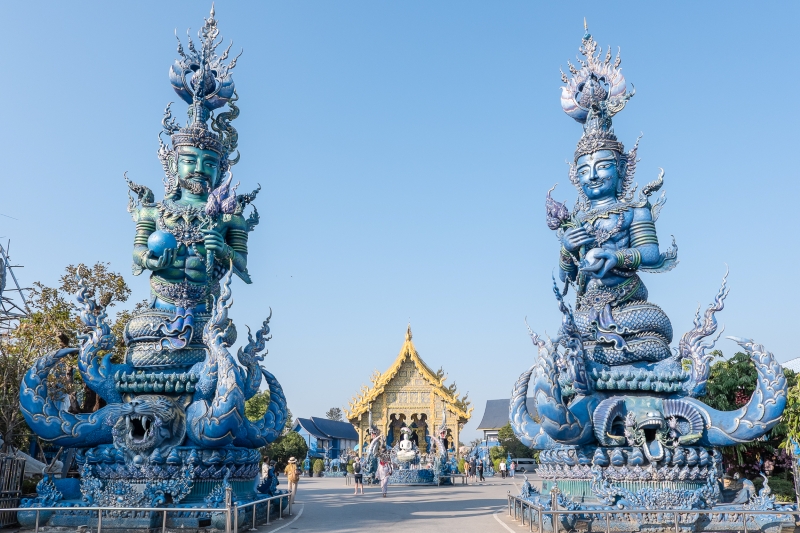
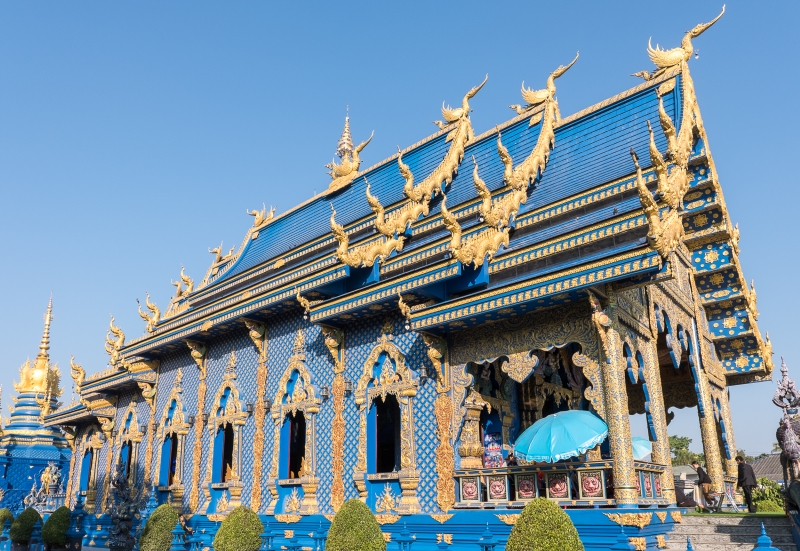
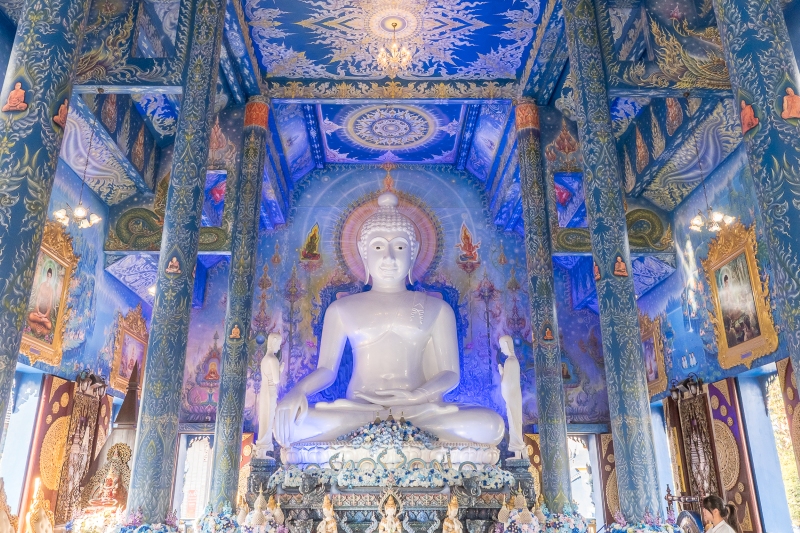
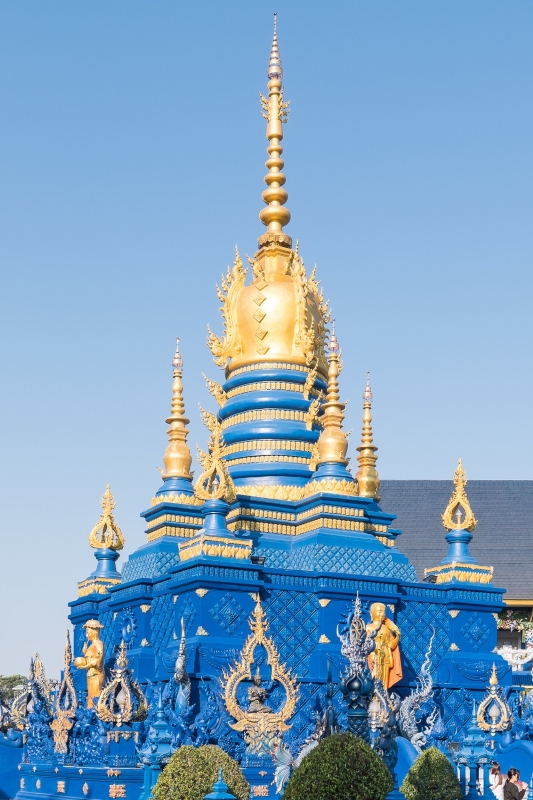
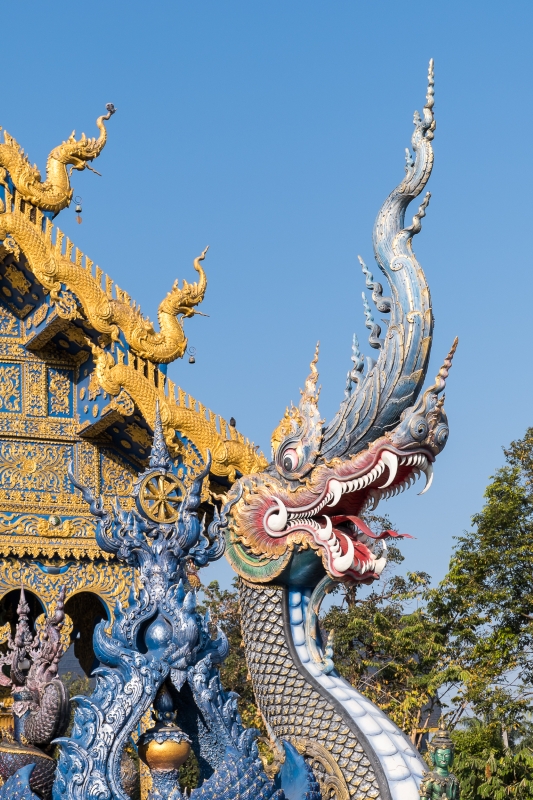
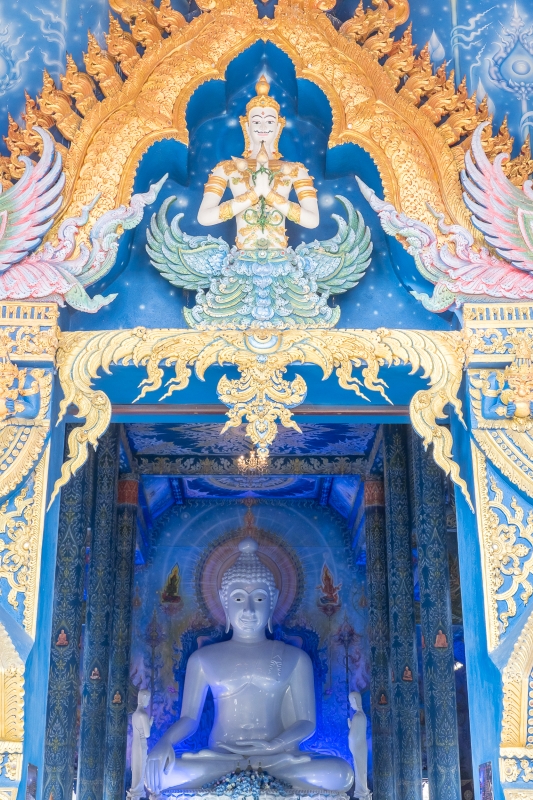
The Blue Temple is very modern and cool looking, quite different from anything else we had seen. It is definitely worth a short visit. We were out of there after about 30 minutes, just as the early tour busses began pulling up.
Next we went to Big Buddha. When we arrived about 10:00 AM there were already a lot of passenger vans in the parking lot, but it was not yet overcrowded. This area has three buildings to see. First, Big Buddha. A surprisingly easy walk up hundreds of uneven stairs brings you to the base of the statue, complete with food and drink vendors.
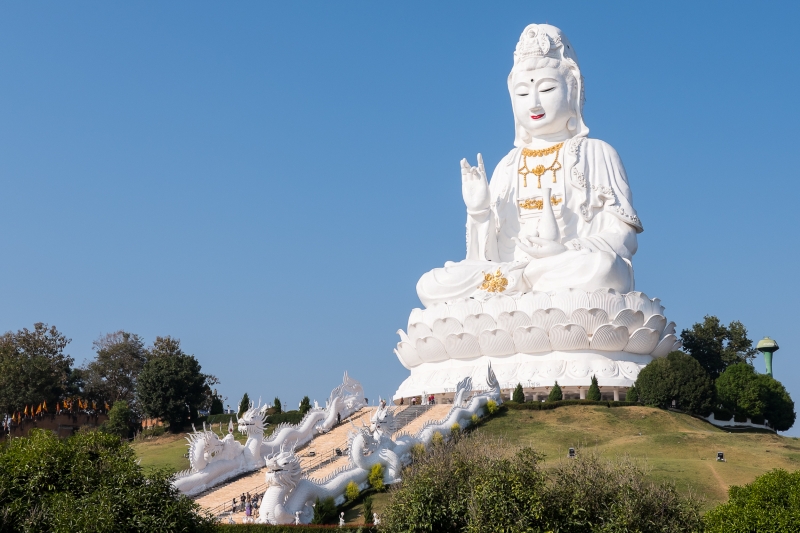
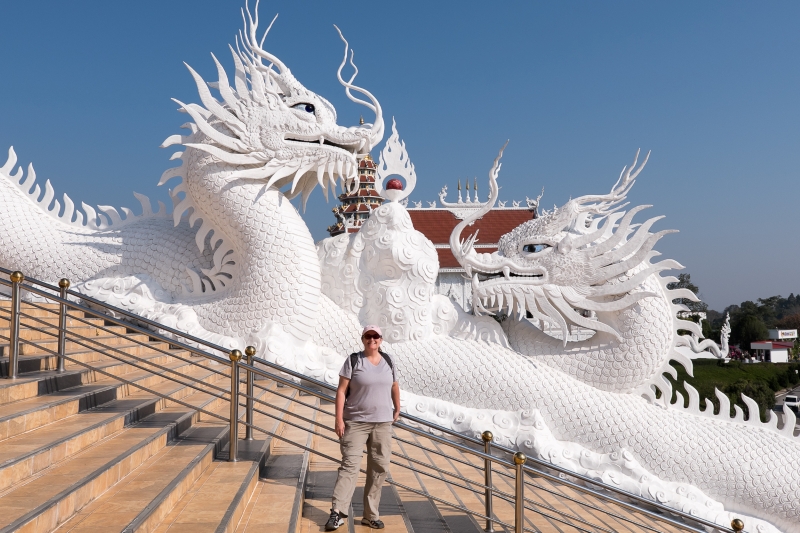
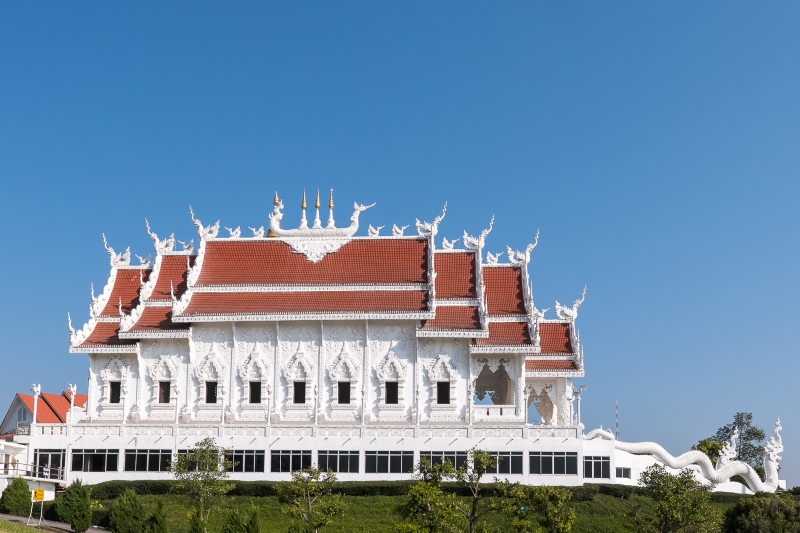

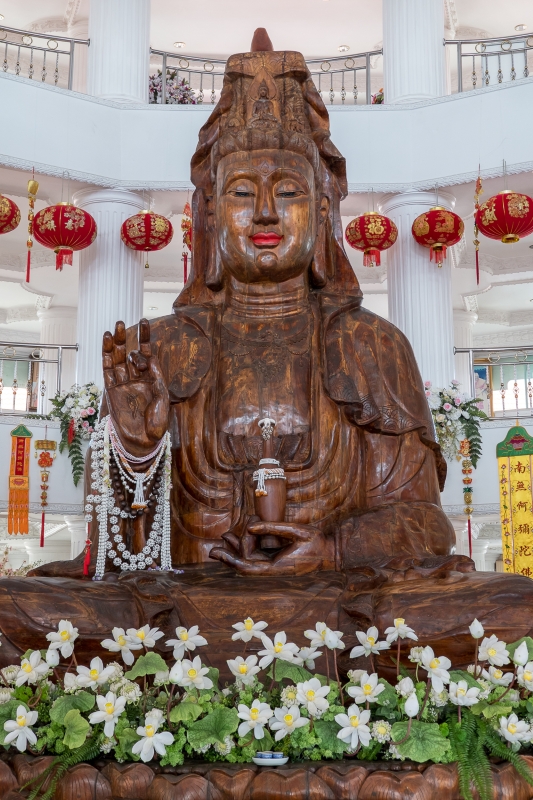
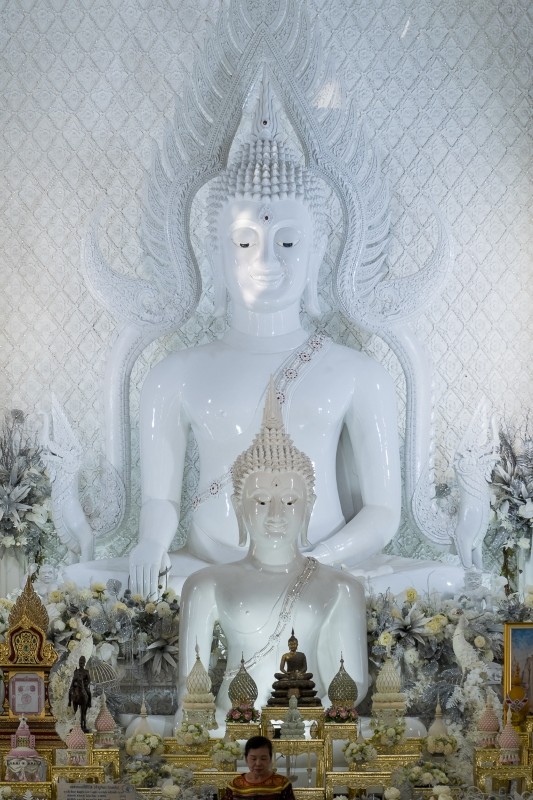
We made the mistake of paying 40฿ each to ride to the 25th floor observation level … where you can look out of a handful of dirty windows. In the spirit of thinking positively, we decided that was our donation to the upkeep of Big Buddha.
A temple next door was our second destination, and is a nice stop in. The all-white scheme was a nice change from what we’ve see elsewhere. Our final destination was a nine story pagoda filled with carved wooden Buddha statues. We walked in, took a quick look around, and left. The idea of walking up a circular ramp several stories high to look at wooden Buddhas did not appeal to us.
Our third and final destination for the day was the Black House, a contemporary art museum spread over numerous buildings out in the countryside designed and created by Thai artist and architect Thawan Duchanee.
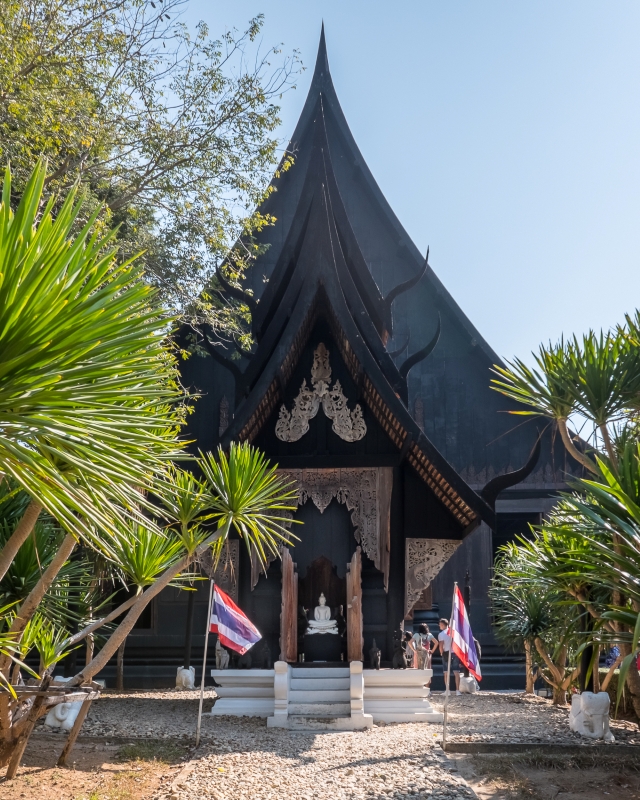
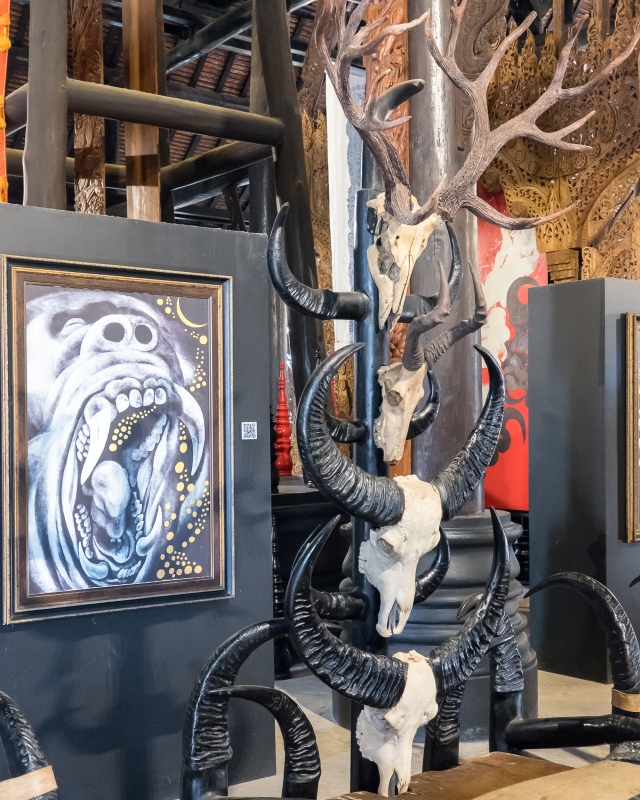
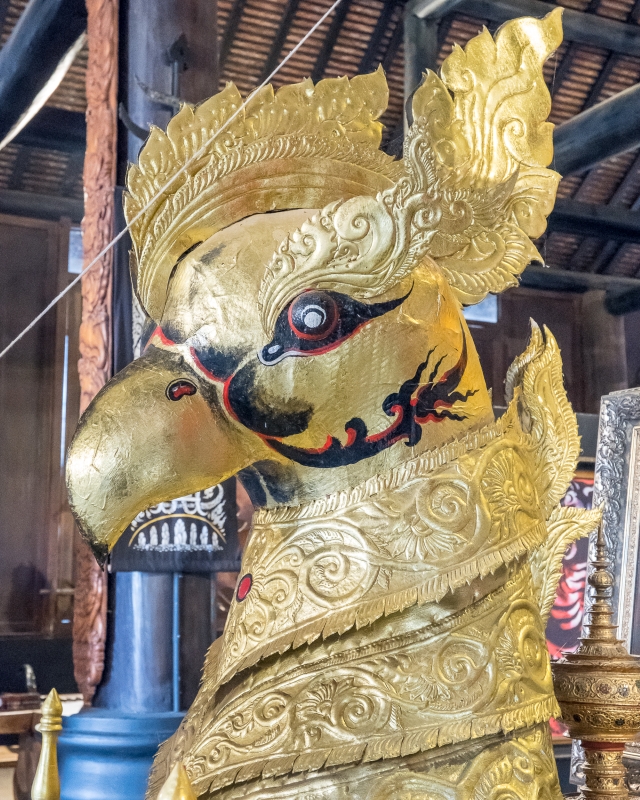
If you’re a fan of contemporary art involving antlers, horns, full size crocodile skins, and some furniture pieces, you might like this place. And there are a few cows on the grounds. Personally I thought it was a waste of a hour and 80฿. Stephanie has a slightly kinder opinion of the place, but not by a lot.
South of Chaing Rai is the White Temple. The complex, which is free to enter, includes art galleries, souvenir shops, a wishing well, towers, galleries, and places to feed fish. It’s a pretty easy place to just walk around for an hour or so.
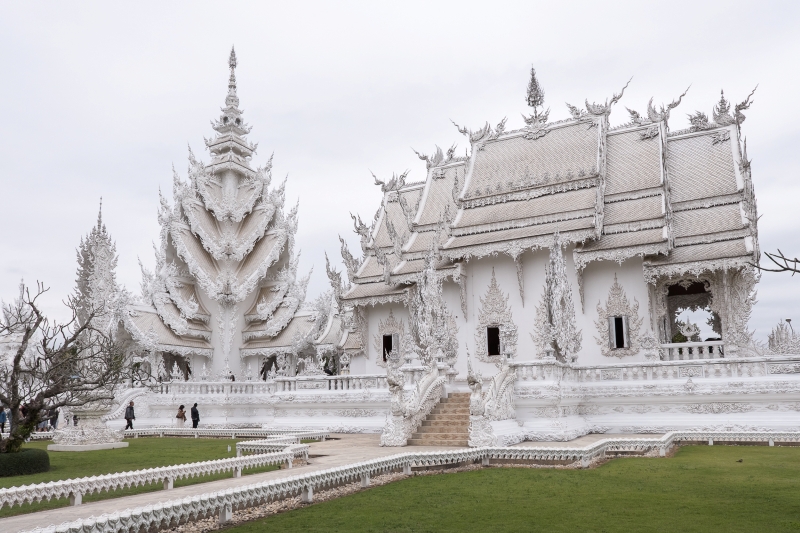
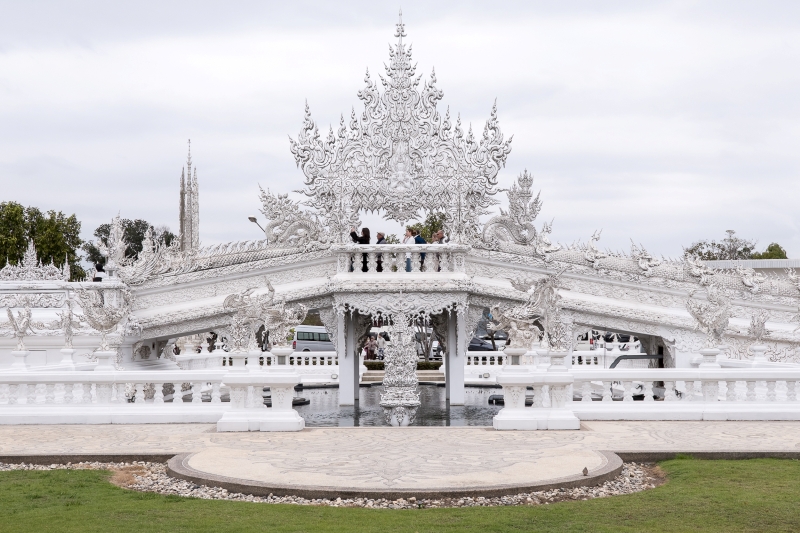
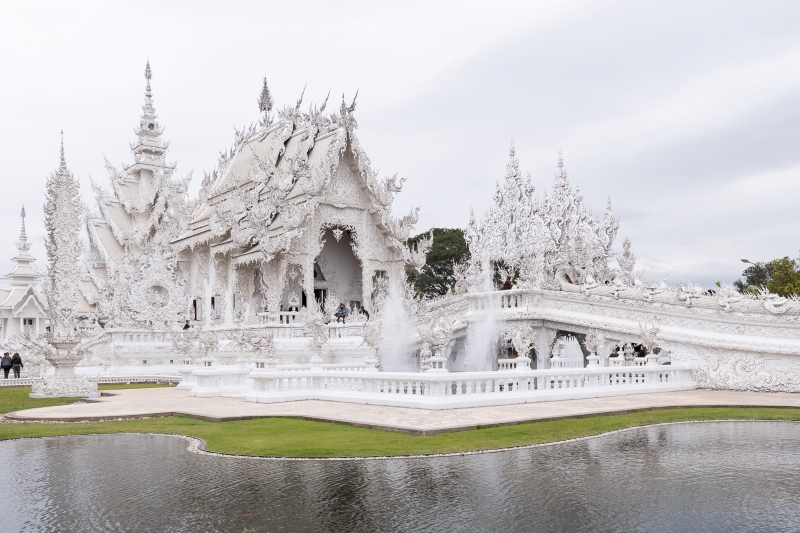
A ticket to walk through the temple itself is 100฿. Unfortunately we were there mid-afternoon and the temple was quite full with tourists. Stephanie and I tried, with partial success, to time our walk across the bridge to the temple itself in between tour groups.
Only when we approached the bridge could we hear the loudspeaker, on loop repeat: “keep walking … do not stop to take photo” (spoken in perfect English). Pretty much everyone ignored it.
At the temple itself a second loudspeaker (also in English) was just as succinct: “no photo … shoes off.” This time, the admonitions were heeded.
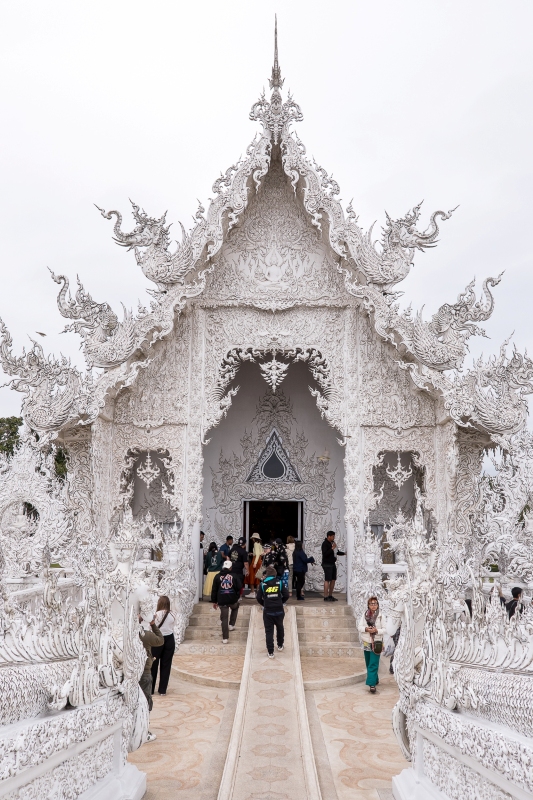
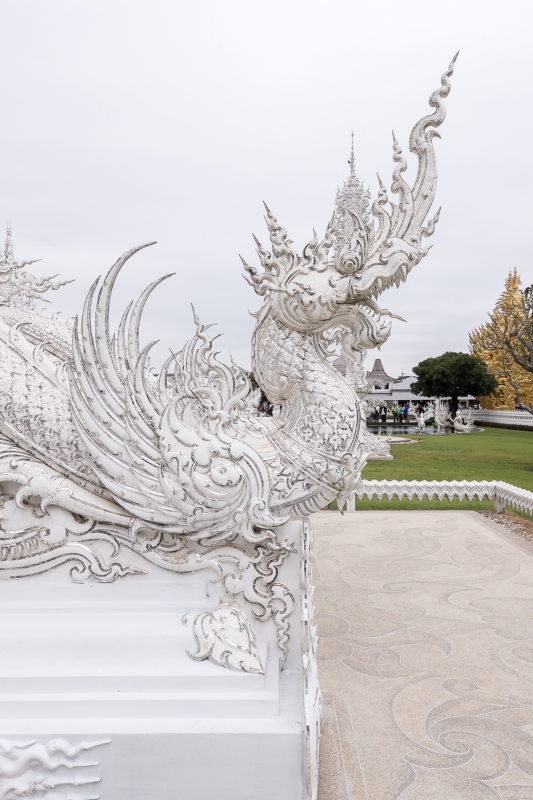
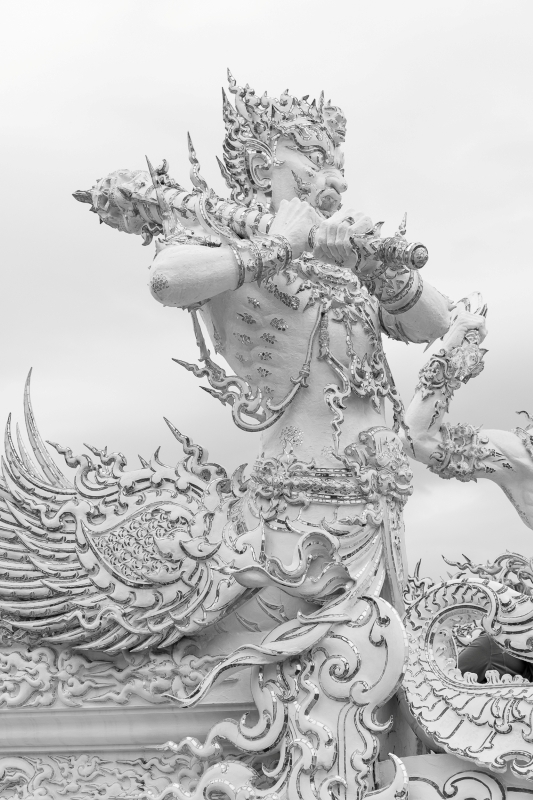
Most of the tour groups simply walk through the White Temple and leave, so the other areas of the complex were not crowded.
Generally speaking, though, I cannot stress enough how touristy these places are. But we’re glad we visited them (well, not the Black House) because each is unique and interesting in its own way.
For a more enjoyable experience, several wats in Chiang Rai are not touristy in the slightest, and worth a visit: Wat Phra Kaew; Wat Phra Singh; and Wat Klang Wiang.
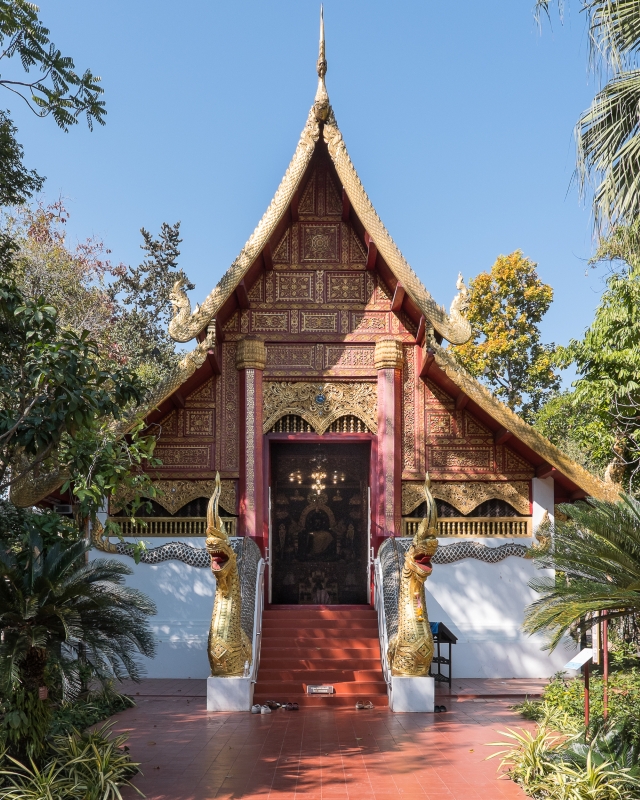
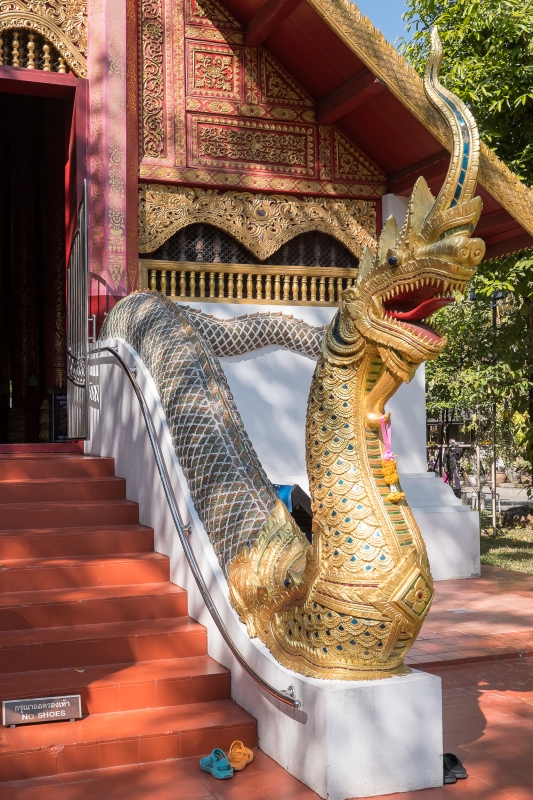
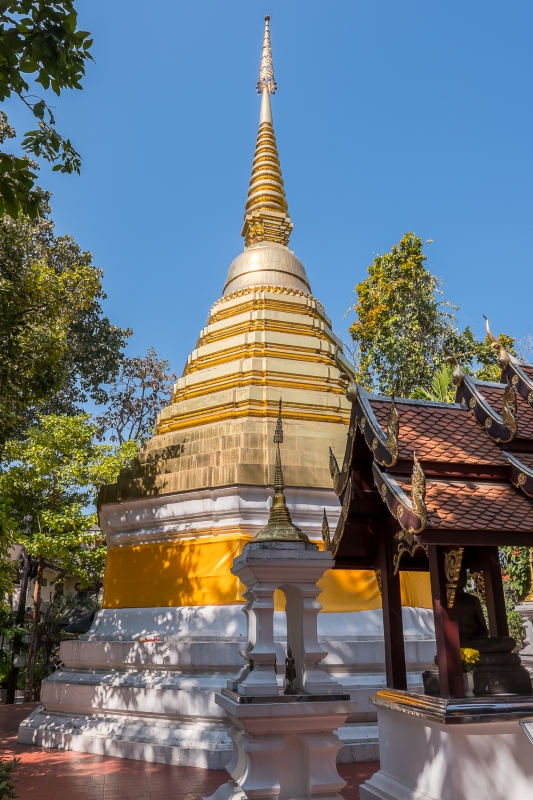
With only a few days in Chaing Rai, we passed on staying in an apartment instead opting for a hotel room. That limited our food choices quite significantly: 7-Eleven for breakfast, The Hungry Nest Café for lunch (excellent breakfasts and sandwiches), and the night market for dinner. Then back to 7-Eleven for a few Singha beers.

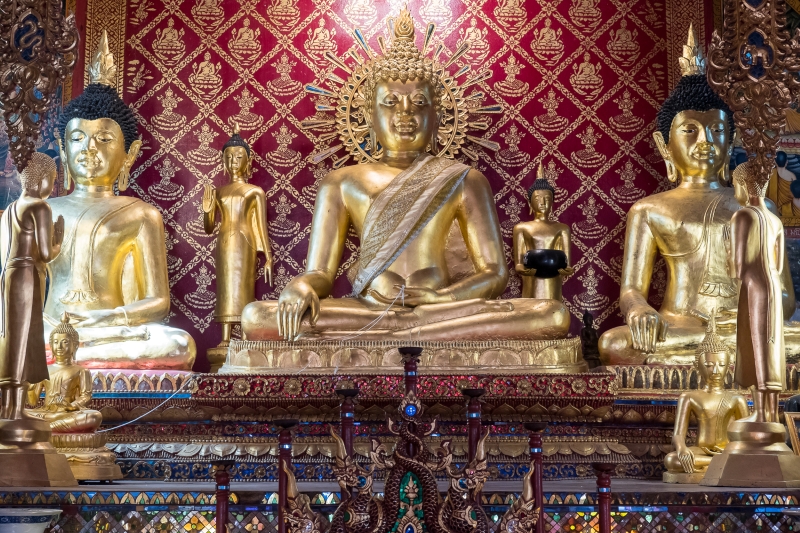

Three days was just right in Chaing Rai. Our next stop is Chiang Khong, on the border with Laos, for one night before a two day cruise on the Mekong River. Apparently there is a local bus to Chiang Khong, but it takes several hours, is not air conditioned, and makes numerous stops along the way. Nope.
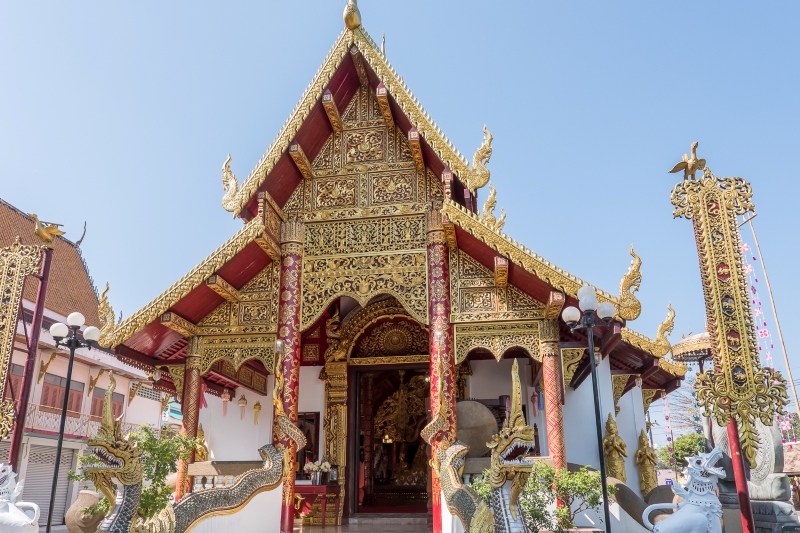
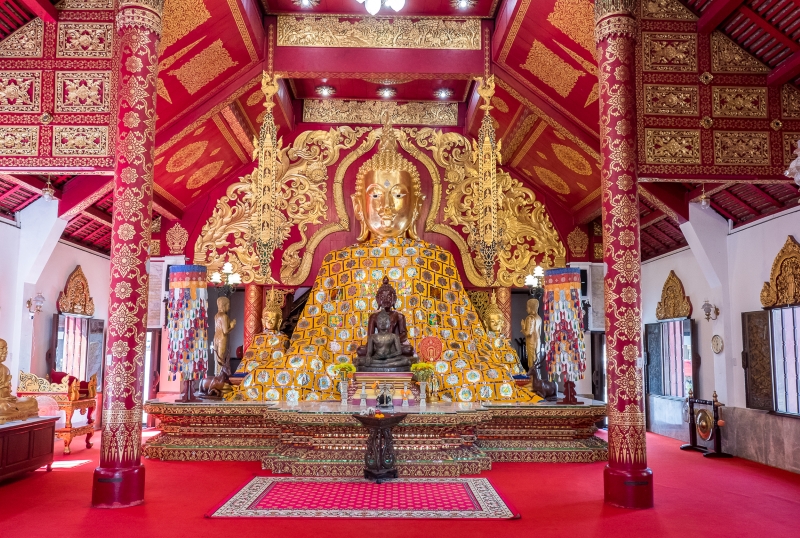
Instead of risking a miserable, albeit cheap, bus ride, we opted to book a seat ($17 each, on 12GoAsia) on a passenger van transfer. We weren’t thrilled with the price, but ninety minutes in a van with a handful of other tourists seemed a better bet than the local bus.
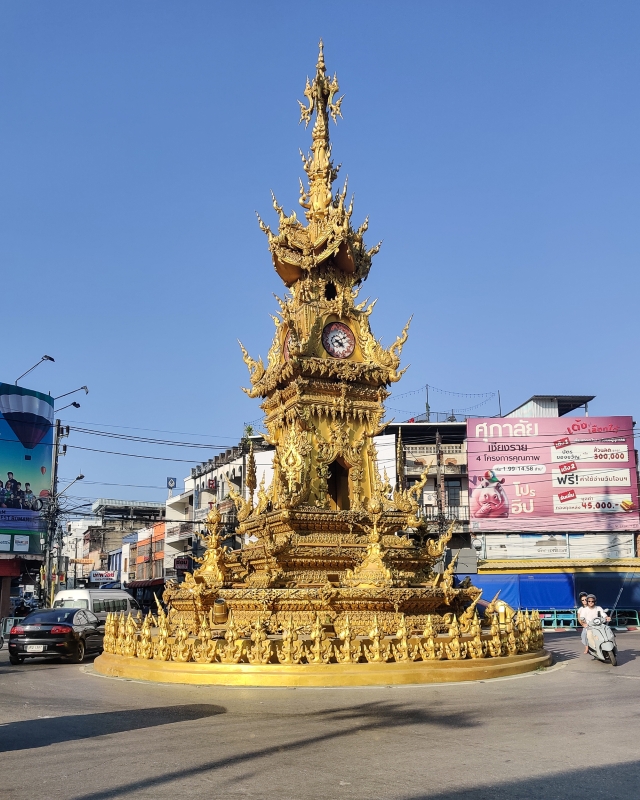
Garrett and Stephanie
For additional posts about Thailand, or elsewhere in the world, check out our Travel Blog. It contains collected links to all of our travel posts.
Want to subscribe (or unsubscribe) for email notification of new blog posts? It is only two to three emails a month. Send your name and email address to slowtravelchronicles@gmail.com, and note subscribe (or unsubscribe) in the subject line. All email addresses will be kept confidential and not sold to any third-party. You won’t get any marketing junk or sales pitches from us.

Wow! Such a different culture. Thanks